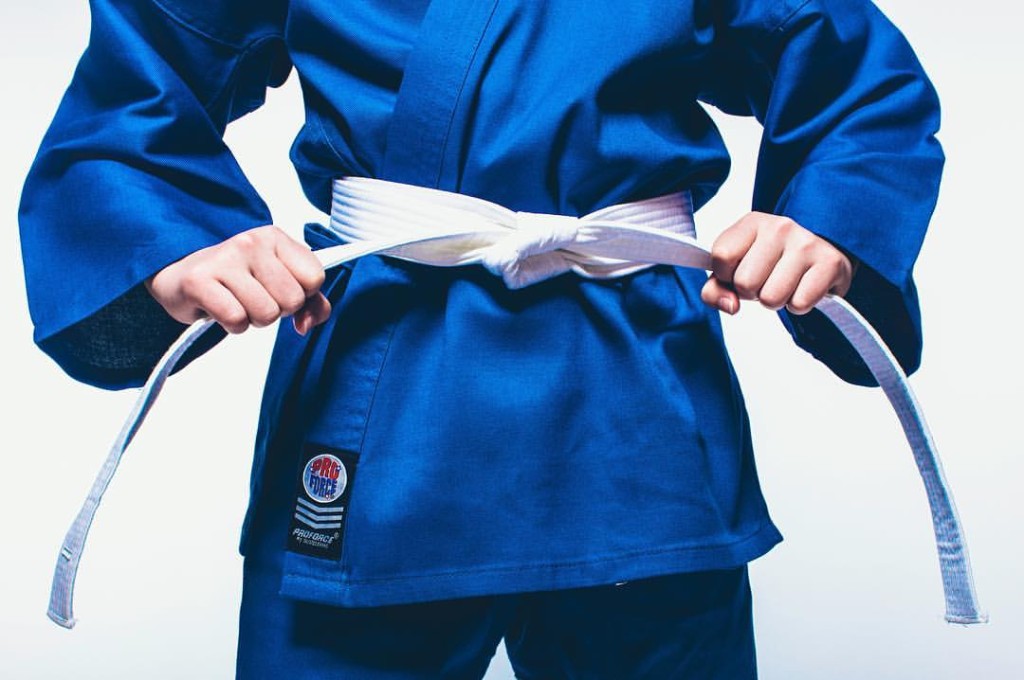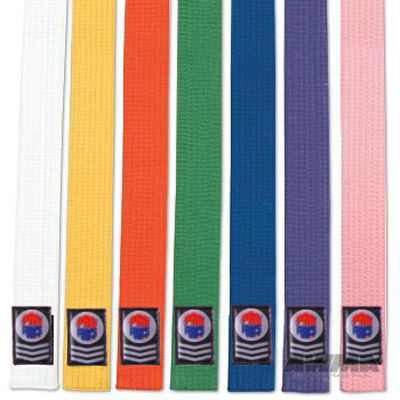Why is it so important to tie your karate belt properly?
Much like karate uniforms, karate belts serve both a functional and a symbolic purpose. The color of the belt represents the rank that you’ve achieved in the discipline, but it is also a symbol of the greater journey that a karateka experiences in their training, like a dormant seed that begins to sprout and reach towards the sun. (For more information on this topic, see The Levels of Karate Belts and The Meanings of Karate Belts.)
The belt itself also has two jobs: it keeps karate uniform in place, but it also represents who and what you are as a student – and as a participant in the long and honorable martial arts tradition. A sloppily or hastily tied karate belt, in that case, can send the message that your respect for the martial art and your attention to detail are lacking. A neat and carefully tied belt, on the other hand, is another way to signal your humble respect for your discipline, your sensei, your teammates, and yourself.
How do I tie my karate belt?
Here is a step by step look at the traditional Japanese method:
Step 1: Placing your hands in the middle of your belt, hold it out and let the ends hang toward the floor to make sure both ends match. This will both makes sure that your belt will be evenly wrapped and tied around your torso and remind you about the importance of balance in your training.
Step 2: Once you’ve found the exact center of your belt, place it over the front of your karate uniform, in line with the position of your navel, with the end of the belt that has the tag on it on your right side.
Step 3: Wrap the belt around your waist, crossing one side over the other, and bring both ends to the front and double-check to make sure that both sides are still even. The tag should now be on your left side.
Step 4: Now that the belt ends are in front of you, cross them again, keeping the end with the tag on top. The tag will now be back to your right side.
Step 5: Without twisting the belt, tuck the tag end under all of the layers of the belt that are wrapped around your waist. Pull both ends tight. The tag will still be on your right side.
Step 6: Bend the left end of the belt up to make a loop. Bring the right end over the top of the loop. The tag should now be on your left side.
Step 7: Tuck the tag end of the belt through the loop and pull tight to form a box knot. This will both keep the belt (and your karate uniform) firmly in place, and remind you of your internal strength and the solidity of your commitment as you prepare to train.
Are there other ways to tie my belt?
There are many, many ways to tie karate belts. Most of them are improper, messy, or disrespectful, but there are a few other methods that will give you an evenly distributed wrap around your waist and clean, strong knot, though. Depending on the gym you train at and the type of martial art that you practice, these alternatives might be acceptable.
Some martial arts, like judo, might also have their own take on some of the details. Some variations are for comfort. Anyone who finds the fold caused by the cross at the back of the above style, for example, can look into a method that wraps around the torso in such a way as to leave the back completely flat. One such version of that can be seen and explained as “The Wraparound” here. Other variations, like “The Lockdown,” which involves inserting the left-facing tip of the karate belt in between the layers of the belt once it’s been tied, have been designed with the goal of keeping the knot more firmly in place.
Not all belt ties are created equal, though, and not all gyms will accept any and every method. Many karate gyms, for example, require their students to use an x-cross at the back of the belt out of respect for tradition. If you’re curious about different takes on belt tying or are unsure of what to do, it’s always best to ask your sensei or consult your gym’s rules to see what is respectful and acceptable in your training environment.





















